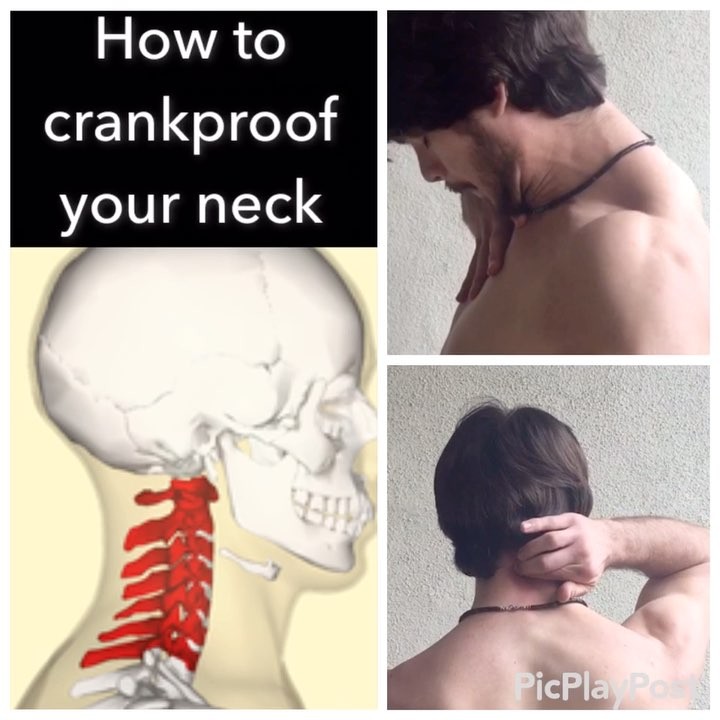How to crankproof your neck – Part II
__________
Jiu jitsu is a martial art where there is a high chance of having a neck injury because so many attacks target the neck. In my last post I discussed the factors that can help reduce the risk for neck injuries. One important factor is having adequate neck mobility. There are several factors that may limit optimal mobility: tissue extensibility (muscle, fascia etc…), Atlanto-occipital joint (C0-C1), Atlanto-axial joint (C1-C2), lower cervical segments (C3-C7) and thoracic segments.
.
If vertebral segments have limited joint mobility than the segments above or below will be forced to compensate. This means they will take up the slack and be forced to move too much. These hypermobile joints are the areas at most risk for injury because they will move if someone is trying to force the neck in a position it should not be in. To reduce the risk for injury if you improve the mobility of those hypomobile segments then the other segments will not be at a higher risk of getting injured.
.
Test for optimal cervical flexion motion: Touch your chin to your sternum. You should be able to reach your sternum without pain, compensation or excessive effort.
.
Self-cervical spine mobilization (Sustained Natural Apophyseal Glides) to restore proper cervical motion to C3-C7. When your cervical spine flexes the facet joints open. This mobilization assists with this process. As you actively flex your neck forward you can put your fingers under the spinous process (bony knobs in the middle of your spine) and apply a firm pressure at a 45 degree angle (pressure towards your eye). After you perform 6-10 movements you progress down towards the next segment. Realistically you want to find the segments that feels “stuck” and focus your attention on them.
.
Focus on pain-free motion. If a segment hurts with pressure start with the segment below then re-test the one above. Often the segment hurts or is tender because it is the hypermobile segment.
.
Re-test to see if you have any improvements (Improved range and/or decreased pain)
.
Following the mobilization you want to retrain your neck to be able to actively use the newly gained range.

